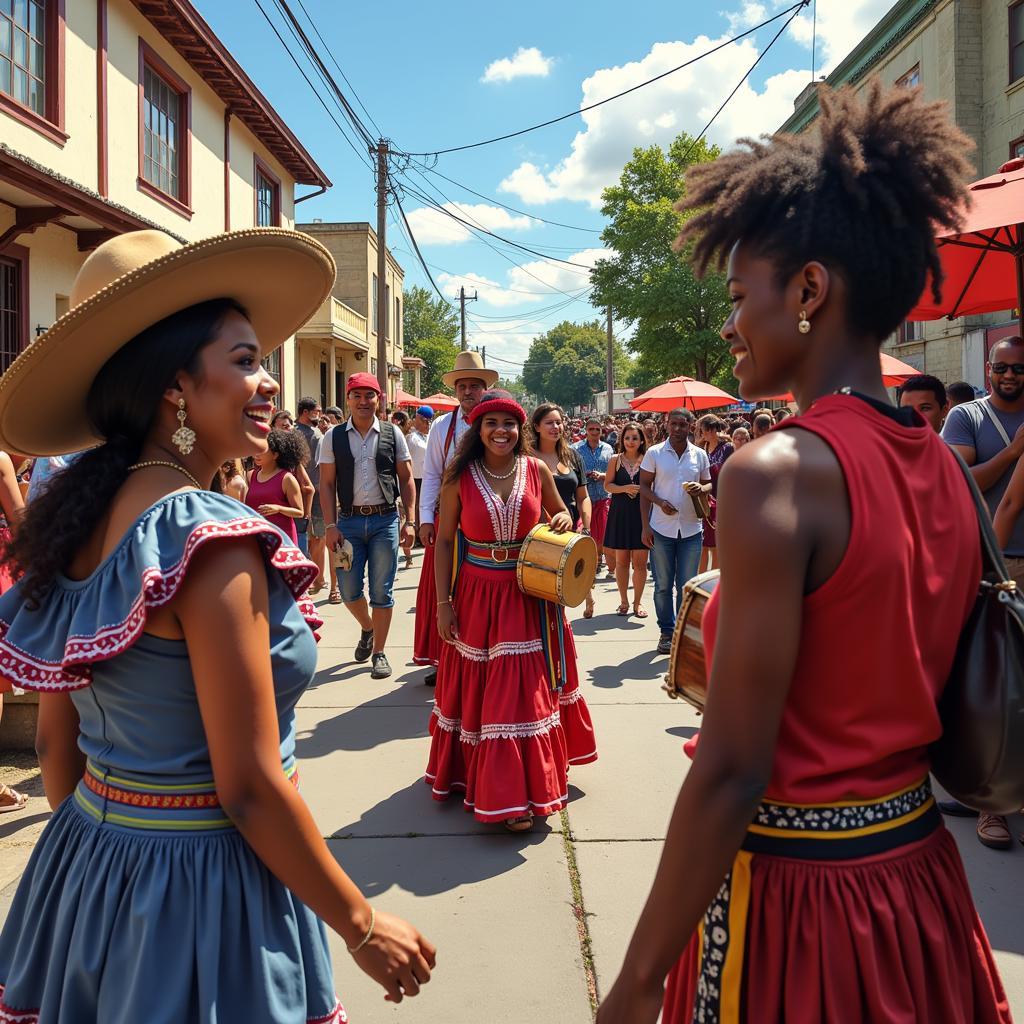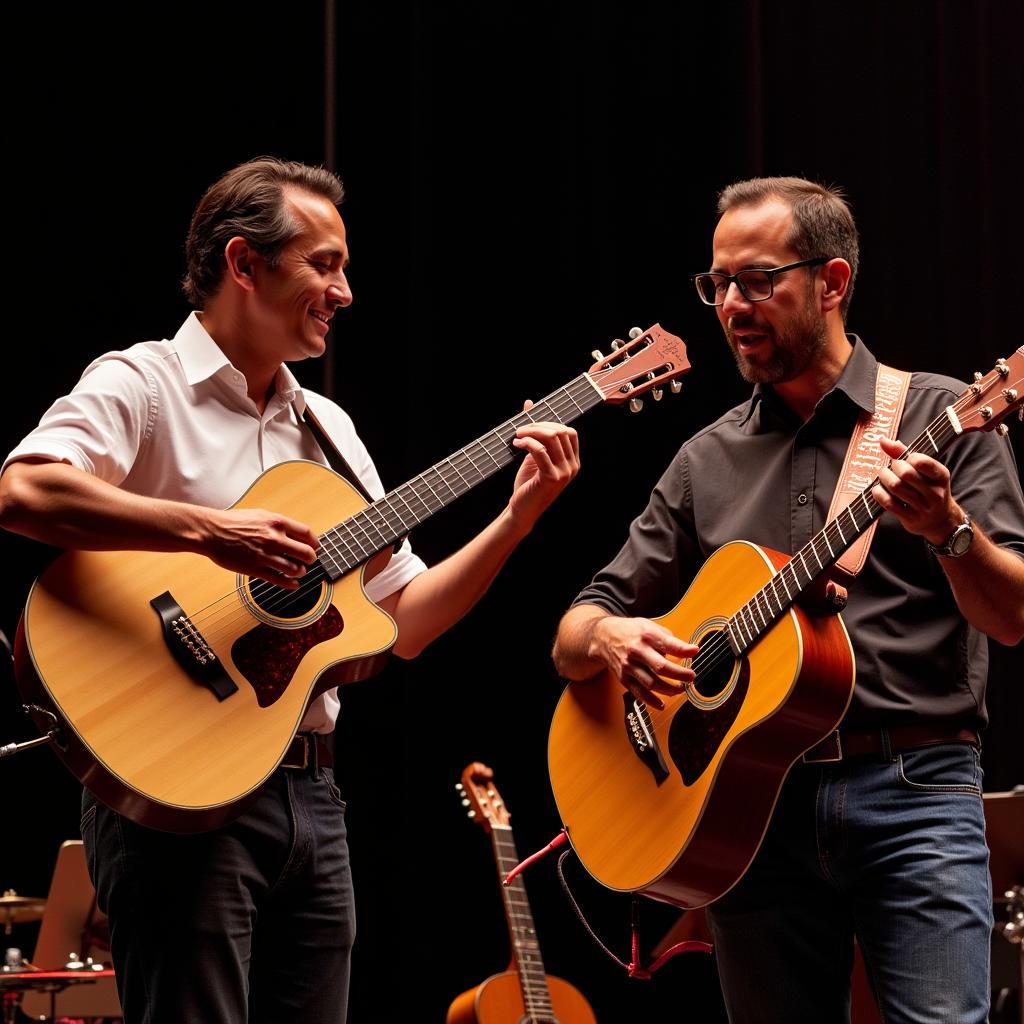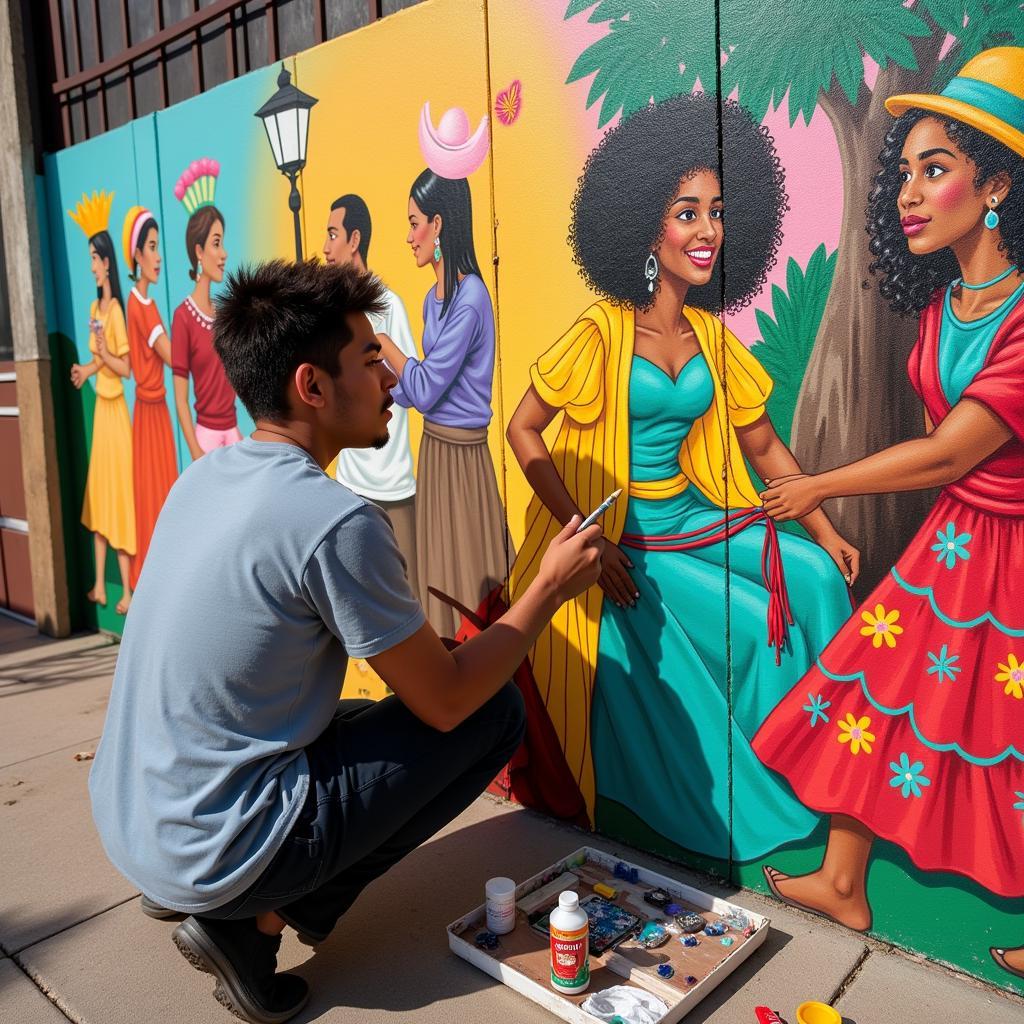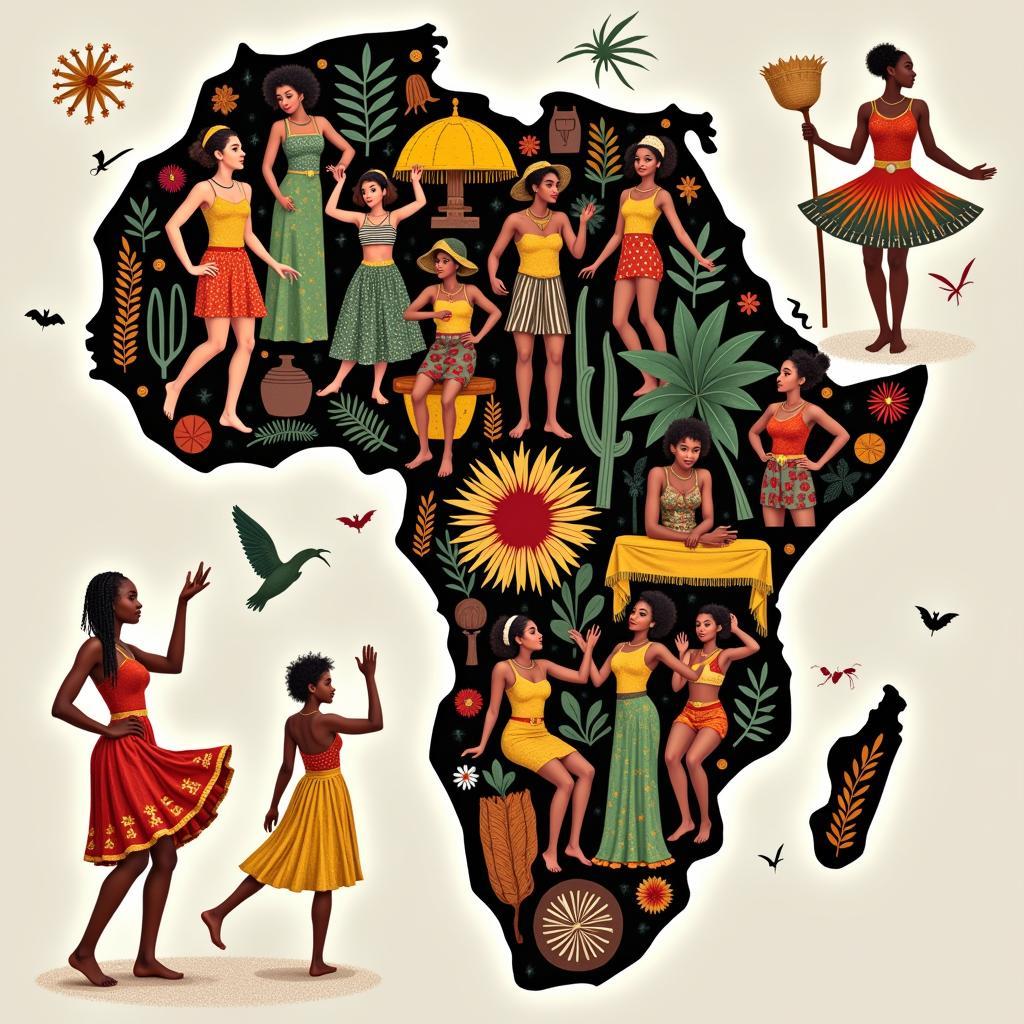Uncovering the Intersection: Mexican and African American Cultures
The fascinating interplay of Mexican and African American cultures often gets overlooked in discussions of cultural fusion. While “Mexican African American” may seem like an unusual pairing at first, a closer look reveals a shared history, cultural exchange, and social dynamics that are as significant as they are compelling. This exploration delves into the historical ties, cultural blending, and contemporary experiences that shape the unique intersection of these two vibrant communities.
 Mexican and African American Community Celebration
Mexican and African American Community Celebration
Historical Encounters: Planting the Seeds of Connection
The intertwined history of Mexico and African Americans stretches back centuries. The transatlantic slave trade brought Africans to Mexico, shaping the nation’s demographic landscape and influencing its cultural development. Many escaped slavery and formed independent communities, contributing to a unique Afro-Mexican identity that still thrives today.
During the US Civil War, Mexico’s abolition of slavery served as a beacon of hope for African Americans seeking refuge. The Underground Railroad, a network of safe houses and routes, extended into Mexico, further solidifying the bond between the two groups.
Cultural Fusion: A Tapestry of Traditions
The shared history of Mexican and African American communities has resulted in a rich tapestry of cultural exchange. Music serves as a powerful example, with the rhythms and melodies of African music influencing Mexican musical genres like Son Jarocho.
 Mexican and African American Musicians Collaborating
Mexican and African American Musicians Collaborating
Food, a cornerstone of both cultures, also reveals this intermingling. The use of ingredients like okra, black-eyed peas, and yams, brought to Mexico through the transatlantic slave trade, highlights the African influence on Mexican cuisine.
Shared Experiences and Social Dynamics
Beyond cultural fusion, Mexican and African American communities have navigated similar social and political landscapes, facing shared challenges related to discrimination, economic inequality, and representation. This shared experience has fostered a sense of solidarity and mutual understanding, leading to collaborations in activism and social justice movements.
Contemporary Expressions: Art, Literature, and Identity
Today, the intersection of Mexican and African American identities continues to find expression through various artistic and literary mediums. Contemporary artists and writers, such as African American and Hispanic, explore themes of identity, belonging, and the complexities of navigating multiple cultural backgrounds. Their work provides a nuanced perspective on the lived experiences of individuals at this cultural crossroads.
 Mexican and African American Artist Creating Mural
Mexican and African American Artist Creating Mural
Conclusion: A Relationship Worth Exploring
Understanding the historical and cultural connections between Mexican and African American communities unveils a narrative often overshadowed. From shared struggles to artistic collaborations, the intersection of these two vibrant cultures offers a unique lens through which to appreciate the beauty and complexity of cultural exchange. As we continue to celebrate diversity and embrace inclusivity, acknowledging and learning from these interwoven stories becomes increasingly essential.
FAQ
1. Are there prominent figures of both Mexican and African American descent?
Yes, various individuals throughout history and in contemporary society embody the intersection of Mexican and African American heritage. These figures have made significant contributions in fields such as music, activism, and politics.
2. Where can I learn more about Afro-Mexican culture?
Resources exploring Afro-Mexican culture are increasingly available. You can find documentaries, books, and academic articles dedicated to showcasing the history, traditions, and contemporary experiences of this vibrant community.
3. How have social justice movements brought these communities together?
The shared experiences of discrimination and marginalization have fostered solidarity between Mexican and African American communities. Both groups have actively participated in and supported each other’s movements for civil rights, economic justice, and social equality.
4. Are there specific regions in the US where these cultures are particularly intertwined?
Certain regions, particularly in the South and Southwest, have historically witnessed greater interaction between Mexican and African American communities due to migration patterns and labor opportunities. These areas often showcase a more pronounced blending of cultural elements.
5. How can I engage with and learn more about this cultural intersection?
Engaging with art, literature, and music created by individuals from these backgrounds is a great starting point. Supporting organizations that promote cultural exchange and understanding is another way to deepen your knowledge and appreciation.
Need More Information?
Explore these related topics on our website:
For any further assistance, please contact us:
Phone: +255768904061
Email: kaka.mag@gmail.com
Address: Mbarali DC Mawindi, Kangaga, Tanzania.
Our customer support team is available 24/7 to assist you.

